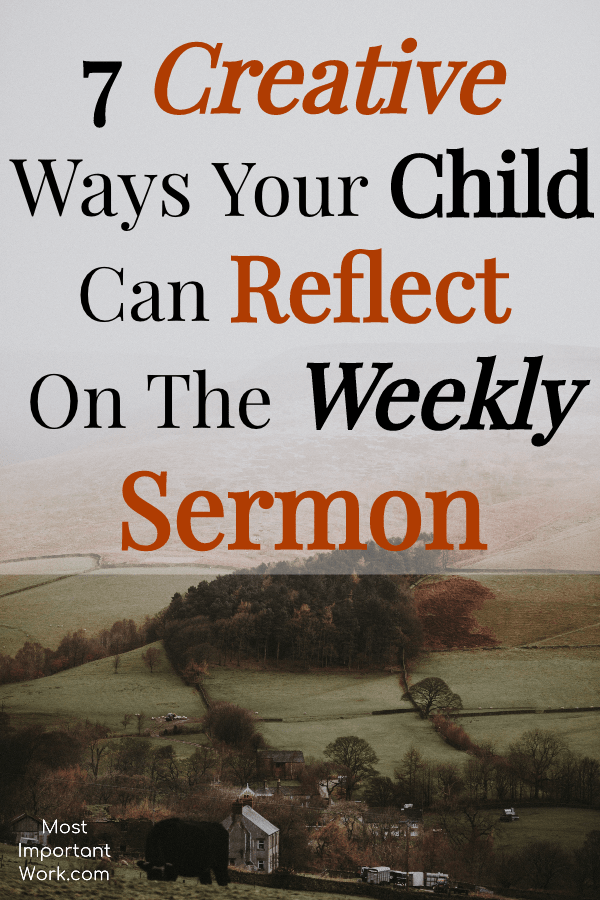
3 Steps To A Spectacular Kid’s Ministry Group That Matters
Reading Time: 3 min 3 sec
I dropped my head in my hands and sighed. A sense of dissatisfaction eked into my soul. I must be missing something. Why is it that every Monday starts with such a promise? I have these great intentions of working ahead, dreaming, evaluating, or even time spent recruiting.
Instead, my week seems to fly by in an endless cycle of crisis management. I feel like I am constantly behind as I run to fill volunteer slots, send out newsletters, attend staff meetings, and prep for upcoming events.
I want to build a Kids ministry that is more than checking a box. I want to create a ministry where kids’ lives are transformed. If only I could stop the relentless clock of Sunday morning long enough to figure out how to get there. This isn’t what I signed up for…
Today, we will talk about three steps to building a spectacular ministry group that actually matters.
Point #1- Pro-Active Vs. Reactive
Point #2- Wonder
Point #3- Seek Wisdom

1. Point #1-Pro-Active vs. Reactive
A quick stop at your local bookstore will overwhelm you with the endless variety of leadership styles available. We could easily dive down the leadership rabbit hole, never to return. We want to focus on briefly addressing a reactive and proactive style of ministry.
A reactive leader spends their days running around putting out fires. They are great at problem-solving. And though they passionately care about their ministry, they can live in the moment and never take the time for big-picture planning. This leadership style, left unchecked, can be stressful, and exhausting, and can quickly lead to burnout.
A proactive leader on the other hand can see the big picture. They are gifted at making sure they meet their long-term goals. They can get so caught up in planning for the future that they can struggle to address daily issues promptly.
I am here to advocate that as leaders, we need to develop both our proactive and reactive skill sets. Have you ever heard the phrase, “What gets talked about gets done?” My variation on that is, “What gets scheduled gets done.” We need to block out and protect time in our weekly schedules to focus on our long-term goals, otherwise daily tasks will dictate our ministries.
At the same time, we need to develop healthy flexibility, understanding that the needs of our pastoral role do not always match a pre-planned schedule. A healthy ministry can’t run on autopilot. Like anything else, it needs regular evaluation and maintenance.
Next Steps- Are you a reactive or proactive leader? If you have not already, block out time on your schedule to focus on evaluation and long-term planning. Set up safeguards to protect that time on your schedule (i.e. set a reminder on your phone, turn your phone to silent, and treat it as a standing meeting on your schedule). Check out Trello. It is a free, visual time management software that has been very helpful in my own ministry setting.
2. Point #2- Wonder
You have blocked out your schedule…now what? These last two steps are not in any sequential order. I would encourage you to write down your vision or goal for your kid’s ministry. Start with this exercise if you are struggling to articulate a vision for your ministry.
What are the characteristics of a child that has just graduated from your ministry? What do you want them to have experienced, learned, and developed while in your kid’s ministry group? What tools do you want them equipped with?
Imagine one of your families has just graduated their last child from kid’s ministry. What would you have wanted them to have experienced, learned, and developed as a family in your church? Duplicate this process with your volunteer team as well.
Don’t rush through this process. Give yourself time to research, to learn how kids connect best with Jesus. Don’t forget to incorporate your church’s vision and purpose in your overall plan for kid’s ministry. You want to confirm that your vision for the kid’s ministry is in step with the overall vision of the church. The last thing you want to do is to create a silo ministry that is not working in tandem with the rest of the church. The vision for your ministry is the foundation upon which everything else is built. This can sound overwhelming, but as the saying goes, “Rome was not built in a day.”
Next Steps: Check out organizations like the Children’s Spirituality Summit for the latest research on the Christian spiritual development of kids. They offer a conference every year where pastors and educators encourage, brainstorm, and learn together. They also publish all of the keynote topics from the conference in a book which you can find on Amazon. I buy it every year it’s that helpful.
3.Point #3-Seek Wisdom
Even the best vision cannot happen in isolation. We need to take the time to hear from God. It can be challenging to hear from him on a deadline. I would encourage you to utilize several days of your blocked-out time to create space to be with Jesus. Take a prayer retreat or a walk to a park.
If you don’t do this regularly, here are some helpful tips to get you started.
Silence your cell phone (or leave it at home). Go for a walk, sit at a park, or in a quiet place. Nature is one of the primary ways where people meet with God.

Spend a period in silence, practicing listening for his voice. Present your heart to God. Sit with him and ask him for his timing, direction, and wisdom. Take your time, and don’t rush this experience.
Talk with your uplink or boss and express your vision for ministry. Ask for their input and wisdom. What do they see that you don’t see? Spend time in prayer, asking God for his wisdom and grace. Discuss the best time and way to implement the new vision. People have a hard time overall with change. So give yourself and others grace as you move slowly, faithfully implementing God’s vision for your kid’s ministry.
Putting in the work by scheduling time, envisioning a better ministry and seeking out wisdom takes effort but it will provide a framework for a transformational ministry. My prayer for you is that your children’s ministry will thrive and you will witness your kids connecting with Jesus in powerful ways each week.
If you want to know how to get started in transforming your Kid’s Ministry: grab our 8 Primary Ways Kid’s Meet With Jesus Guide (below). And join the MIW Community of children’s pastors who are hungry to lead a transformative Children’s Ministry.
What about you? What is your #1 issue when it comes to developing your Kid’s Ministry? Leave a comment, and don’t forget to follow Most Important Work on Pinterest!



